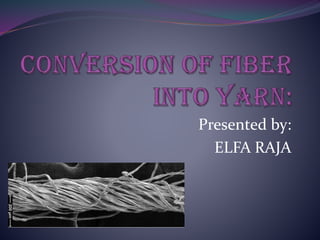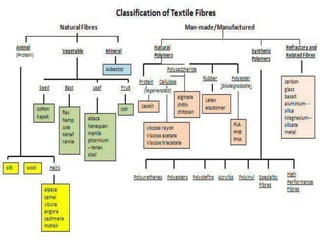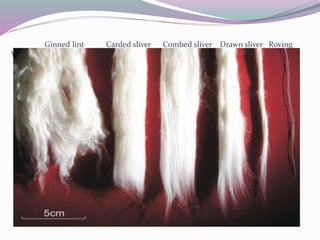Fibers are converted into yarns through several processes to prepare them for fabric construction. Fibers are first opened, blended, and cleaned. They then undergo either carding or combing to further clean and align the fibers into slivers. The slivers are drawn and spun into yarns, which can be done through ring spinning, rotor spinning, or air jet spinning. Ring spinning produces the highest quality yarns while rotor and air jet spinning have higher production rates. The yarns are then wound onto packages or cones and are ready to be used to create fabrics through weaving or knitting.































